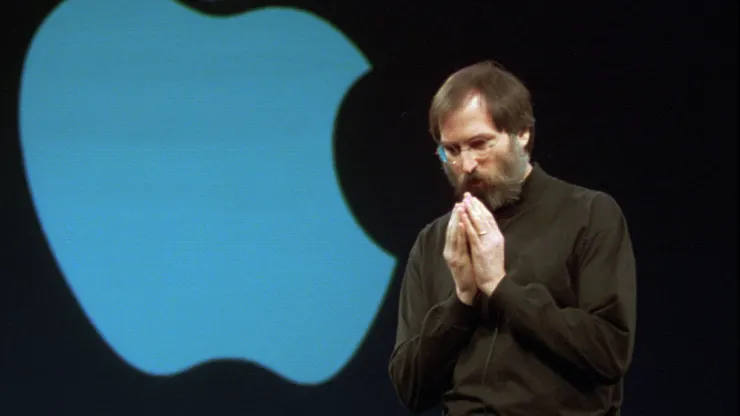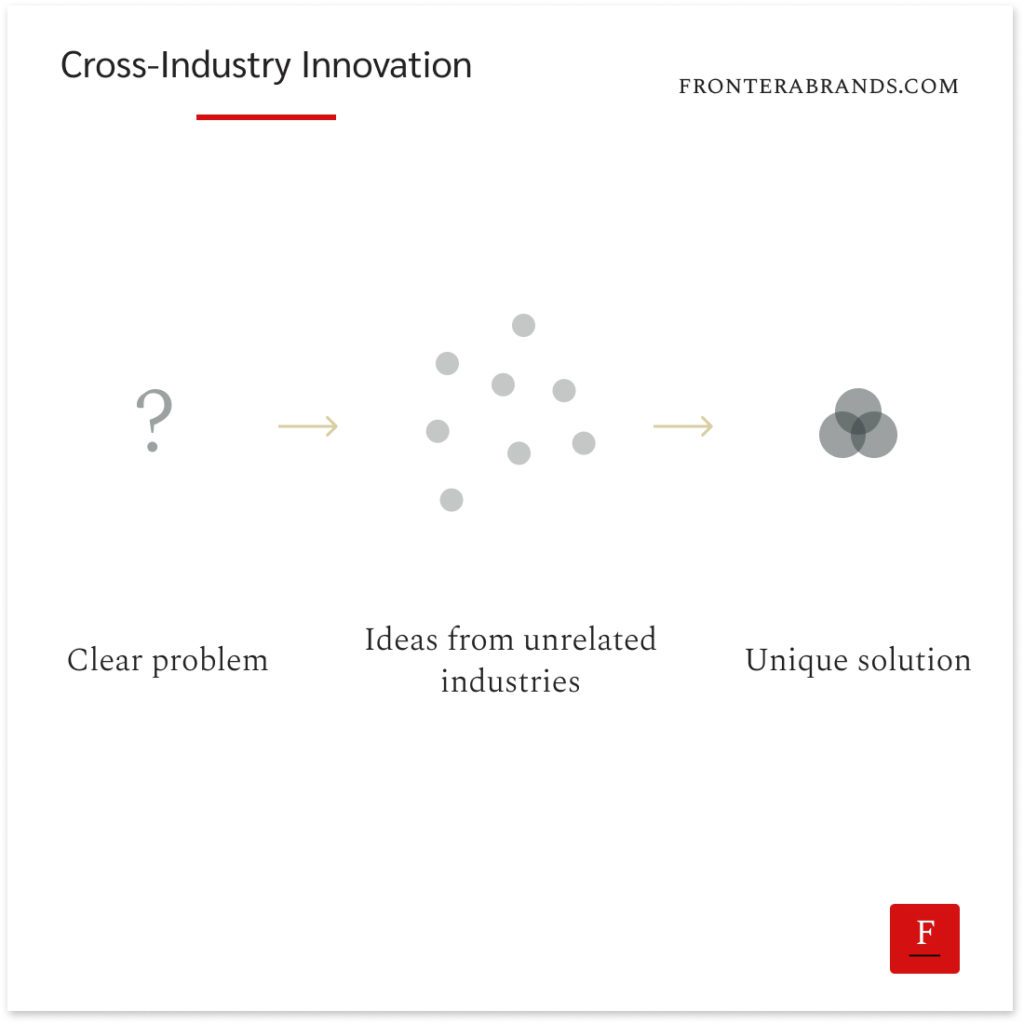In 2001, all business and tech publications were saying Steve Jobs just made a big mistake.
Jobs announced that he decided to change Apple’s retail strategy.
Up to that point, Apple had partnered with electronic retailers like Best Buy and Circuit City to sell its products.
But it never worked out as Apple expected.
Apple products were displayed next to other brands that Apple didn’t want to be associated with.
And employees of these chains never had the desired level of knowledge about Apple products.
Nor the incentive to sell more of them.
So sales were disappointing.
Apple executives tried different things to improve — like having dedicated spaces and employees for Apple products within certain retailers.
But nothing worked.
So Jobs decided it was time to create Apple’s own stores.
But many analysts thought it was a huge mistake.
Even Michael Dell said it was going to be a disaster for Apple.
There was no precedence for a tech company building a successful retail channel.
And most electronic retailers were hardly profitable.
But Jobs wanted to do things different.
He didn’t see the new stores only as sales channels.
The new store was a great opportunity to give people a physical place where they could feel the Apple brand.
But the question was: “How?”

Jobs and Apple’s new executives who were hired for the project decided to ignore the designs of all existing electronic retailers.
Instead, they looked for inspiration from remarkable physical experiences — unrelated to tech.
The first one was museums.
All museums are designed to showcase the art.
As Jobs saw Apple products as works of art, they had to be presented as artwork in museums.
Also, museums provide an experience to inform visitors about art pieces or history.
They are not only transactional.
So Apple’s new stores also had to be similar where visitors could use Apple products and learn about what they could do with them.
The next inspiration came from luxury.
Jobs loved how luxury brands paid attention to the design of their stores.
They knew details mattered — from the materials they used in stores to how employees behaved.
So Apple’s new stores had to feel like luxury stores showing Apple’s innovative, simple, and premium identity.
And they had to be in certain locations next to other luxury brands.
Jobs even contacted LVMH’s CEO Bernard Arnault to get his feedback about the plan.
And after gathering all the ideas and hundreds of meetings, they developed the concept of the new Apple Store.
They opened the first one in 2001 in Virginia.
The 500+ people who waited in line for the opening were not disappointed.
Nobody had ever seen any tech store like that before.
People loved it.
Apple Stores reached $1 billion in sales in three years.
And you know the most unbelievable number?
In 2011, Apple Stores in the United States reached an average revenue of $473,000 for each employee.
This is what Jobs said about Apple Store’s success:
“People haven’t been willing to invest this much time and money or engineering in a store before.
It’s not important if the customer knows that.
They just feel it. They feel something’s a little different.”
When ideas from unrelated sectors help you differentiate
In his famous Stanford Commencement speech, Steve Jobs talks about connecting the dots.
Developing the Apple Store concept was the perfect example of it.
He and his team connected the dots but from different industries.
Up to that point, all tech executives were thinking within the boundaries of their industry.
Hence their retail results were limited to the same boundaries.
But Jobs strived for something unique.
And he created a new norm for all tech brands.
Ramon Vullings calls it cross-industry innovation in his book Not Invented Here.
It’s a problem-solving method to come up with unique ideas by using what’s been done in other industries.

Think about this.
Whatever business problem you are trying to solve, there is a high chance that it’s already solved in other industries.
But many executives, engineers, and designers have vertical careers — they are specialized in certain sectors.
So they always think “inside the box.”
And when you have more or less the same thinking as your competitors, you can’t differentiate anything by default.
That’s why cross-industry innovation is helpful.
It helps to go beyond the ideas that all your competitors already use.
Now, the idea is simple.
But let’s talk about some key points to use it for your business.
Two points that will make cross-industry innovation more effective
1. Make a decision first
There is one thing that prevents creativity the most: an unclear problem.
I know, sounds obvious.
But you can’t believe how often businesses fail to innovate because of confusion.
Everybody tries to pull in different directions when there is no clear decision regarding the company’s (or a department’s) direction.
In other words, when there is no clear strategy.
Hence nobody can come up with good solutions.
So get clear on the problem first — like Steve Jobs did for the Apple Store.
After trials and failures with different tech retail partners, Jobs made the decision:
They had to create a unique physical experience worthy of the Apple brand.
There was no other option.
Once the problem was clear, it became easy to look for inspiration outside of the tech industry.
Remember: the clearer the problem is, the easier it gets to innovate.
2. Learn all the best practices… And ignore them
“We follow our industry’s best practices.”
If you ever hear this from an executive or see it on a website, you can be sure whatever product that brand offers is average.
You know why?
Learning “best practices” in any industry is useful at the beginning.
You get to understand how things work.
But when everybody follows them, companies become copies of each other.
Similar products.
Similar brands.
And similar marketing tactics.
So by definition, you have to ignore best practices to be different.
And an easy way to replace the best practices of your industry is to use ideas from unrelated sectors.
We talked about the Apple Store and design.
But let’s see some other examples where companies used cross-industry innovation in different areas to gain an edge:
Other Examples of Cross-Industry Innovation:
- Product: James Dyson used cyclone systems he saw in sawmills to build a better vacuum cleaner without bags. Nike copied the cables from suspension bridges to create Flywire technology that provides support with little weight in athletic shoes.
- Marketing: Philip Krim and his friends realized almost all mattresses were sold in physical stores. So they founded Casper Sleep to sell mattresses using an e-commerce model.
- Business Model: Dollar Shave Club got inspiration from software companies and created a subscription service for razors. Customers loved the convenience and cost savings. The company was sold to Unilever for $1 billion in 2016.
- Experience: Peloton combined live group classes with home fitness equipment to create a unique workout experience.
Now don’t get me wrong.
There are some operational areas where “best practices” are helpful.
Like security and safety.
But beyond that, you have to challenge the status quo to be different.
If not, doing what all others are already doing is the perfect way to become a commodity.
Imagine if Steve Jobs kept following the tech best practices of the time.
Apple would never have Apple Stores or iPhones as we know them today.
So as Picasso said:
“Learn the rules like a pro, so you can break them like an artist.”
–
Enjoyed this article?
Then you’ll love the How Brands Win Newsletter.
Get the “5 Mental Models to Differentiate Your Business” guide when you join. It’s free.
